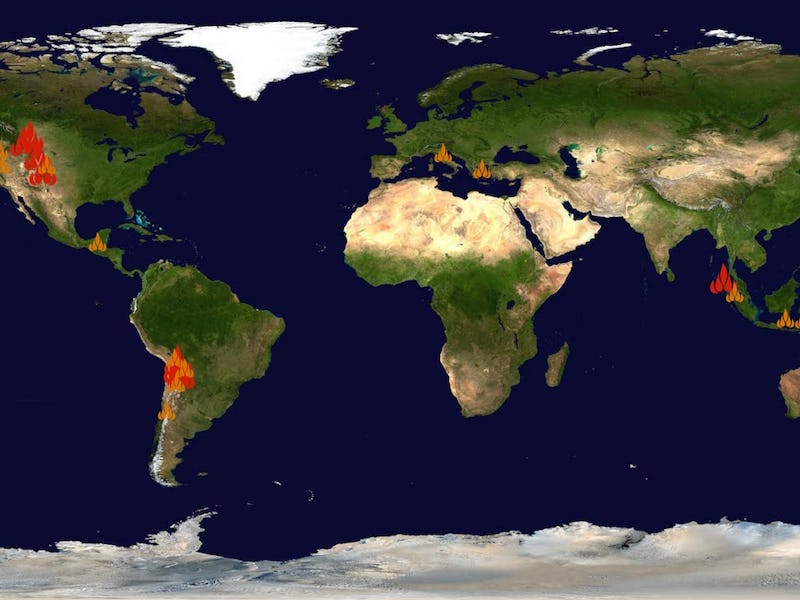This Map Shows Earth's Turbulent History of Supervolcano Eruptions
The United States was once a very fiery place.

A sudden swarm of earthquakes in Montana set off fears that the supervolcano at Yellowstone National Park could be reawakened in early July, spewing more lava by volume than there is ice in the iceberg that just broke off Antarctica’s Larsen C ice shelf.
It was, however, fake news that the Yellowstone supervolcano — or “lava geyser,” as the post called it — was spewing lava. While experts do not expect the Yellowstone volcano to erupt without warning, there’s always a small probability. According to one scientific study, there’s a one percent chance of a supereruption in the next 7,200 years.
What is a supervolcano?
A supervolcano is typically defined as a volcano that ejects at least 240 cubic miles of magma in one eruption to earn a Magnitude 8 or higher on the Volcanic Explosivity Index. To put that in perspective, the 1980 eruption of Mount St. Helen’s expelled just 0.7 cubic miles of rock.
Supervolcanoes don’t form mountain peaks, but instead form massive craters called calderas. As the magma chamber under the surface shoots massive quantities of gas, ash, and molten rock upwards through seams in Earth’s crust, the ground sinks down to fill the emptying cavity below.
This map shows known major volcanic eruptions of Earth's past. Those in red are at least Magnitude 8 on the Volcanic Explosivity Index.
Where have supervolcanoes erupted in the past?
This map, though incomplete, shows some of the past major volcanic events of Earth’s relatively recent history, on the order of dozens of millions of years. Evidence of much older events will have been washed away by the dynamic ticking of geological time. Magnitude 8 supervolcano eruptions are in red. The smaller orange icons show the larger Magnitude 7 events of the past.
A closer look at the left of the map, to see the data for North and South America.
It may be a matter of better documentation, although it certainly appears that the continental United States has had a particularly fiery past. The Yellowstone volcano saw major eruptions 2.1 million, 1.3 million, and 630,000 years ago. Two of those were Magnitude 8 supereruption events.
The largest known volcanic eruption ever occurred just a little further south, in Colorado, about 28 million years ago. That event saw 1,200 cubic miles of magma spew from Earth, enough to qualify as a supervolcano five times over.
A closer look at the right side of the map.
There’s no evidence that any supervolcano will blow within your lifetime, or that of your children and their children and so on for centuries to come. But if there were, and we had even a bit of warning, we’d be evacuating whole countries. An ash cloud from a Yellowstone supereruption would darken the skies and blanket the entire continental U.S. in toxic dust. It would set off catastrophic climate change that would throw environmental systems out of whack for centuries. As if the planet doesn’t already have enough on its plate.